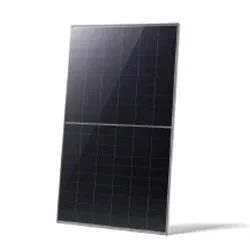Size Specifications for 1kW Solar Panels in Square Feet Explained
Understanding 1 kW Solar Panel Size in Square Feet
As the world increasingly shifts toward renewable energy sources, solar power stands out as one of the most promising alternatives. When you consider installing solar panels, a crucial aspect to examine is the size of the solar panel system required. This article explores the size of a 1 kW solar panel system in square feet, its relevance, and the factors that influence panel size.
A 1 kilowatt (kW) solar panel system can generate about 1,200 to 1,500 kilowatt-hours (kWh) of electricity annually, depending on factors such as location, orientation, and climate. To harness this amount of energy effectively, one must consider the size of the panels needed for installation. On average, solar panels available in the market range from 250 to 400 watts. Assuming we are using 300-watt panels, to create a 1 kW system, you would need approximately three panels (1000 watts / 300 watts per panel = about 3.33, rounded down to 3 panels).
Understanding 1 kW Solar Panel Size in Square Feet
Several factors influence the total area needed for a solar panel installation beyond just the panel dimensions. First, sunlight exposure is critical. Areas that receive more sunlight will generate more energy, allowing for a smaller system investment. For instance, a system installed in Arizona may require less area compared to one in a cloudier region like Seattle, even for the same power output.
1kw solar panel size in sq ft

Another vital element is local regulations and installation guidelines. These can dictate spacing requirements between panels, clearances for maintenance, and potential shading effects, which can increase the total area needed for a solar installation. Moreover, roof orientation, tilt angle, and shading from trees or buildings can affect optimal placement, thereby impacting the overall size of the solar panel setup.
Additionally, during planning, it's essential to consider future energy needs. As household energy consumption may increase with the acquisition of electric vehicles or additional appliances, opting for a larger system from the outset might provide more long-term benefits without the need for future upgrades.
Cost considerations also play a significant role in determining the size of a solar power system. The initial investment for solar panels, inverters, and installation services can be significant. Therefore, the available roof space may dictate the maximum power output you can aim for, balancing your budget and energy requirements.
In summary, a 1 kW solar panel system requires around 52.5 square feet of space when using typical 300-watt panels. However, the actual area needed can vary based on multiple factors such as sunlight exposure, local regulations, and the specifics of your energy requirements. As you explore solar energy options, consider these elements carefully to devise an efficient and cost-effective solar power solution that meets your needs. Investing in solar panels not only contributes to sustainable energy generation but also offers long-term financial benefits through reduced utility bills and potential government incentives.
-
String Solar Inverter: The High-Efficiency Solution for Smart Solar EnergyNewsJul.14,2025
-
Revolutionizing Rooftop Energy with the Power of the Micro Solar InverterNewsJul.14,2025
-
Power Independence with Smart Off Grid Solar Inverter SolutionsNewsJul.14,2025
-
On Grid Solar Inverter: Powering the Future with Smart Grid IntegrationNewsJul.14,2025
-
Monocrystalline Solar Panels: High-Efficiency Power for the Future of Clean EnergyNewsJul.14,2025
-
Bifacial Solar Panel: A Smarter Investment for Next-Generation Energy SystemsNewsJul.14,2025







